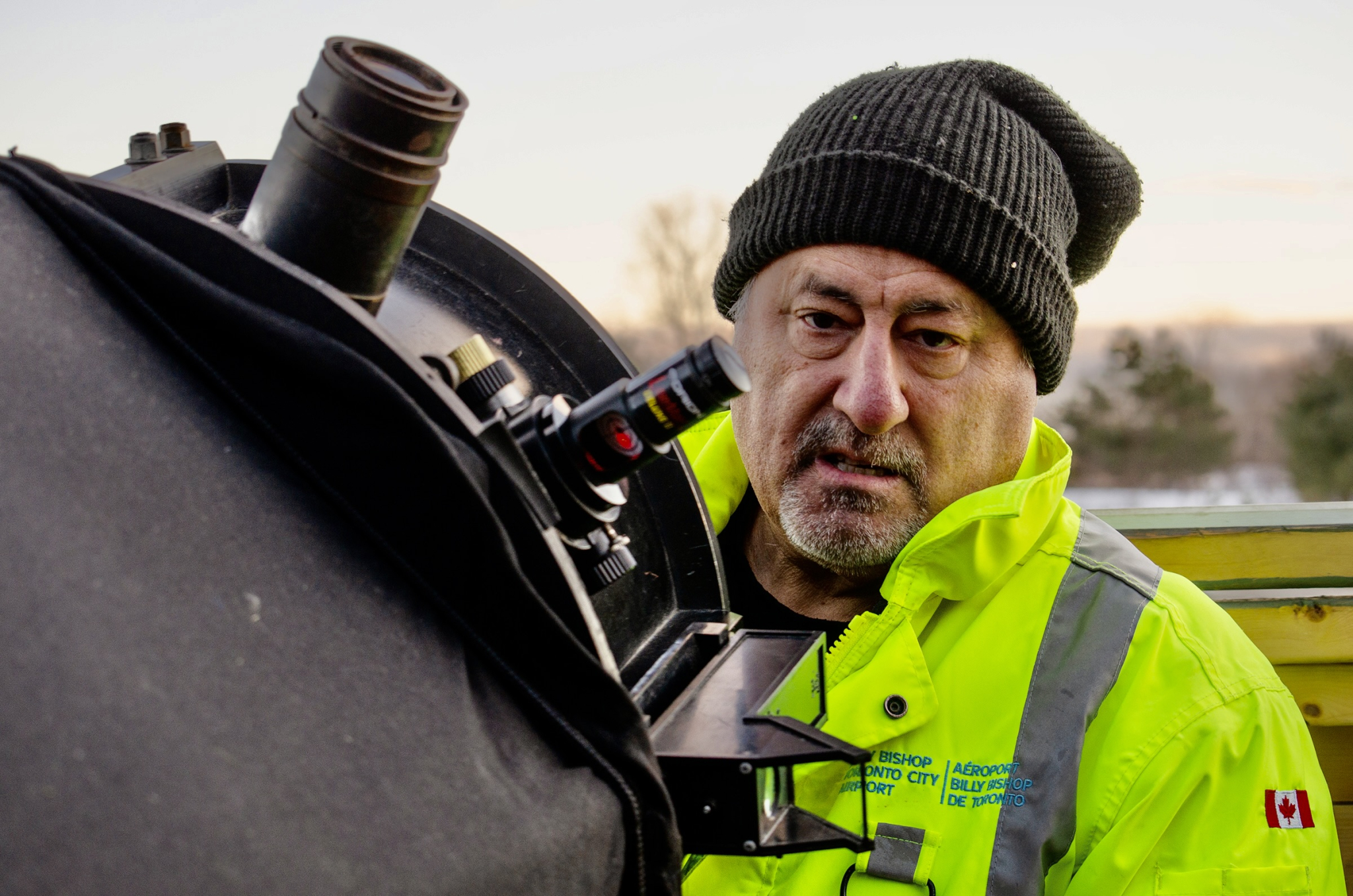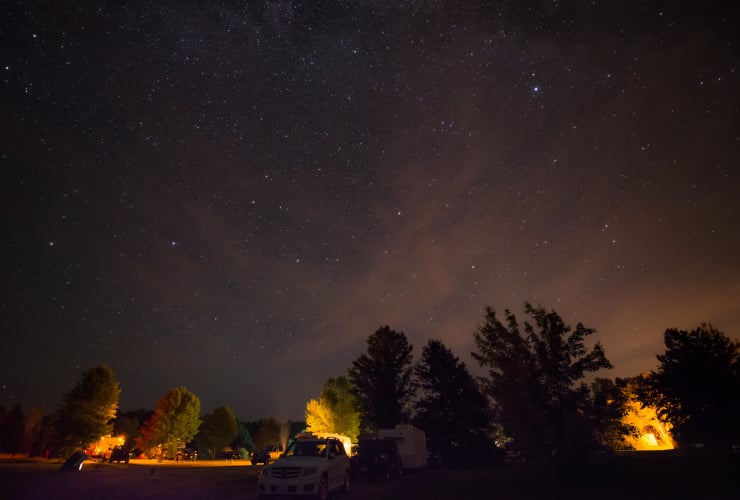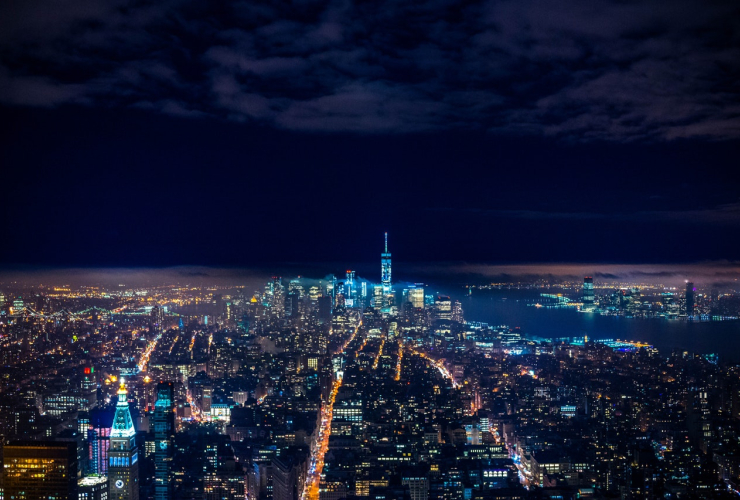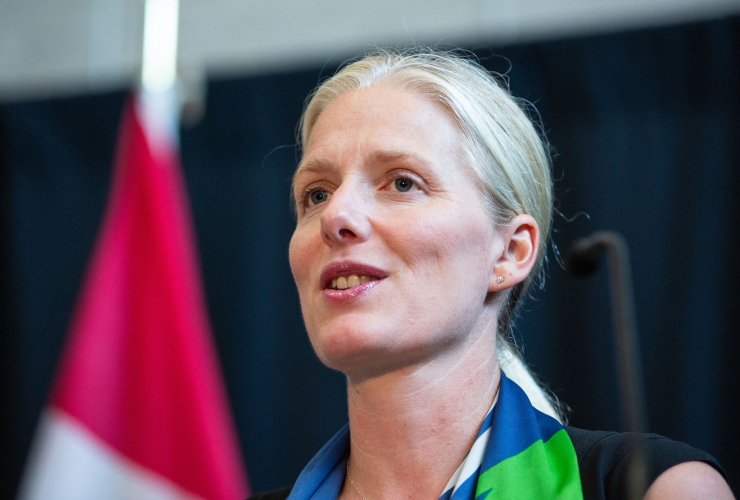On Sept. 23, 2022, Gary Colwell held an outdoor party at night with absolutely no lights. People from across Ontario flocked to the North Frontenac Township Dark Sky Preserve about two hours west of Ottawa to stargaze under dark skies.
Some drove from as far away as Montreal and Toronto just to escape light pollution. In big cities, powerful artificial lighting 24 hours a day makes for brighter skies, making stars less visible. But in the 44,871 square kilometres of the dark sky preserve, bylaws control when people can turn on artificial lights and what kind of lighting people can use.
In the preserve, the Milky Way is so bright, you can almost read a book by it, Colwell said. “People are coming up here because you can't find dark skies [near cities] anymore. It's just not possible.”
Light pollution is only getting worse. Newly published research using data from the U.S. National Science Foundation's National Optical-Infrared Astronomy Research Laboratory (NOIRLab) found people worldwide are able to see 9.6 per cent fewer stars each year. That’s equivalent to the sky doubling in brightness every eight years.
From 2011 until 2022, a team of researchers headed by NOIRLab asked people across the world to rate how dark the skies are above where they live. In that time, researchers collected more than 51,000 observations through a website called Globe at Night. Constance Walker, a co-author of the paper and an astronomer at NOIRLab, said in North America, stars are disappearing even faster — here, residents see about 10.4 per cent fewer stars each year.
“Imagine you were born in a big city, and you look up and see 250 stars,” Walker said. “In that city, if you're still there 18 years later, you would only see about 100.”
On Jan. 19., Walker and her co-workers published their research in the journal Science.
Lauren Knowles, an educator with the Royal Astronomical Society of Canada (RASC) who is not involved in NOIRLab’s research, said the study is a significant discovery. Although astronomers watch the skies get brighter over time, Knowles said NOIRLab’s study was the first to track the rate of light pollution’s damper on stargazing.
“We're not really paying attention or thinking about the potential consequences of the lighting that we install,” Knowles said. “The study will hopefully shed more light, or you know — shed more dark — on the impact of our lighting.”
Previous research has shown light pollution tampers with the life cycles of plants and the migration patterns and predator-prey interactions of animals. It also threatens to undermine the traditions and stories of people worldwide, Knowles said.
“When we lose the ability to see the night sky, we also lose that connection to our heritage for cultures all across the world,” Knowles said.
When he was a teenager in the 1970s, Colwell would drive half an hour from his home in Mississauga, Ont., to see the stars. Colwell would set up his telescope on an escarpment outside Milton to gaze at the stars under “dark, dark skies.”
Then, a well-lit ski hill went up about seven kilometres outside Milton’s city centre.“They destroyed the sky,” Colwell said. “You can see good stars, but they're nowhere near what they used to be at all.”
Colwell never gave up on his search for dark skies. In 2004, a fellow stargazer told him about a property listing in Plevna, a community within North Frontenac Township. Colwell said as soon as he saw the town at night, he knew he had to live under that deep and quiet sky.
“I didn't even have to think about it,” Colwell said, now retired and living in Plevna with his wife. He maintains an observatory in his backyard and educates visitors about the importance of night skies.
In 2013, RASC designated North Frontenac Township one of Canada’s dark sky preserves, a designation for places where policy prevents light pollution and astronomers run programs to educate people about stars and dark skies.
Dark sky preserves make up 28 of RASC’s 33 official “dark sky sites.” Knowles said NOIRLab’s research shows it’s not enough to keep those policies to specific zones.
“We're not advocating to turn off all the lights,” Knowles said. “But what we are advocating for is lighting more responsibly.”
At home, Knowles said, people can turn off lights they’re not using — which saves energy, too. Lights that cannot be turned off, like streetlights, can be dimmed during low-traffic hours and aimed downwards. Colwell said cities can shield downward-facing lights from above — with glare shields that look and act like lampshades — to reduce skyglow.
Walker said LED lights are energy efficient but emit a blue light that’s brighter than warmer hues. She said adding an amber or yellow tint to LED lightbulbs so they emit “warmer” colours reduces their impact on light pollution and animal behaviour.
When Colwell learned about NOIRLab’s research, he said he was upset his grandchildren might never see the sky the way he can.
“Honestly, it almost makes you cry,” Colwell said, “because that's something that we will not get back unless we do something drastic to change the idea of lighting around the world.”
Updates and corrections
| Corrections policyThis article has been updated to clarify the involvement of the U.S. National Science Foundation's National Optical-Infrared Astronomy Research Laboratory (NOIRLab) in newly published research on light pollution. NOIRLab headed the data collection but not the data analysis featured in the paper. We regret the error.
I moved to a small rural
I moved to a small rural highway community, from Ottawa, 35 years ago.
One of the glories here is being able to sit or stand in the driveway, and look up at the millions and millions of stars. To watch the phases of the moon change through my bedroom window.
To be able to sleep in the sunroom, and see even more of the night-time sky, the night-time world.
We had a neighbour across the road who installed one of those obscene ginormous "worklights"--like what you'd find on a city street or a highway, years ago. It's the only time I asked my husband to teach me how to shoot, so I could blow the d*mned thing out. (They moved.)
If you want city lawns, city lights, stay in the damned city. I want as much of the natural world as I can get--and more.






Comments